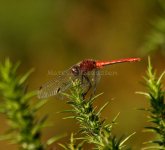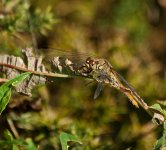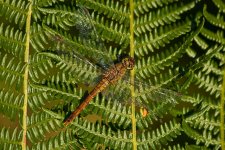MarcellC
Well-known member
Hi all
Couple of days ago I was in Syderstone Common and managed to get some half decent shots of what appear to be darters. This is my 1st "proper" attempt at ID on dragonflies, so any help much appreciated.
Photo #1: I gather (from the very helpful ID pointers thread) that this is a Ruddy Darter
Photo #2: this darter has a blue-ish colour to the underside of the abdomen - Common Darter?
Photo #3: This one I photographed near the darter in photo no. 1 - is this a Common Darter though? zooming right in it appears the pterostigma is more brownish than the reddish of the Ruddy Darter
Cheers
Marcell
Couple of days ago I was in Syderstone Common and managed to get some half decent shots of what appear to be darters. This is my 1st "proper" attempt at ID on dragonflies, so any help much appreciated.
Photo #1: I gather (from the very helpful ID pointers thread) that this is a Ruddy Darter
Photo #2: this darter has a blue-ish colour to the underside of the abdomen - Common Darter?
Photo #3: This one I photographed near the darter in photo no. 1 - is this a Common Darter though? zooming right in it appears the pterostigma is more brownish than the reddish of the Ruddy Darter
Cheers
Marcell






